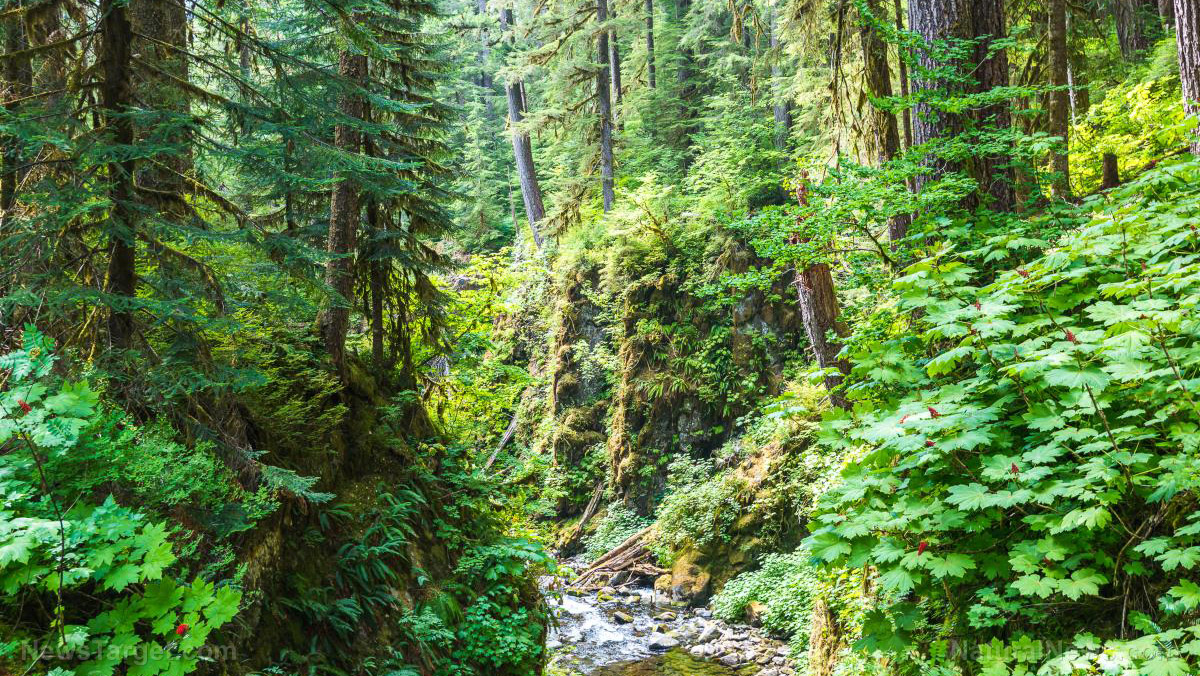
DeWalt, who is also the chair of the College of Science's Department of Biological Sciences, explained that nature "will take care of it if we let it." She added that the restoration of tropical forests should rely on natural regeneration because it is the most efficient way of doing it
The restoration of tropical forests is also the most "ecologically efficient" and "economically efficient." Tropical forests are essential not just to the people who live around them, but also to the planet. (Related: Forest area the size of France has regrown worldwide since 2000, new study reveals.)
Data suggest that secondary forests regrow naturally after almost complete removal of forest cover for anthropogenic use, such as for "shifting cultivation, conventional cropping or cattle ranching."
To date, more than 50 percent of the Earth's tropical forests are not old-growth, but naturally regenerating forests, most of which include secondary forests. In the neotropics, secondary forests cover at least 28 percent of the land area.
For the study, scientists analyzed how 12 specific forest attributes recover during the natural regeneration process and how their recovery is related. They studied 77 sites and 2,275 forest plots throughout tropical forests in North and South America and West Africa.
DeWalt and her colleagues took part in the study by analyzing plots in central Panama since the 1990s.
- Soil fertility takes less than 10 years to recover to old-growth forest values.
- Plant functioning takes less than 25 years.
- Species diversity takes 60 years.
- Aboveground biomass and species composition can take longer than 120 years.
According to Lourens Poorter, a professor at Wageningen University in the Netherlands and the study's lead author, while it is important to actively protect old-growth forests and stop further deforestation, tropical forests can potentially regrow naturally in already deforested areas on abandoned lands.
These regrowing forests cover vast areas and can help contribute to local and global targets for ecosystem restoration, added Poorter.
Planting is sometimes necessary
If the deforested area isn't too big or has not been farmed too much, a nearby forest could provide a beneficial and interconnected ecosystem that can help a new forest grow.
However, some circumstances may require reforestation. DeWalt said that planting will be required if there is no source for seeds, the soil is heavily degraded soils and there is no way for animals to get there.
In these cases, planting will be necessary.
DeWalt took part in another study where experts took a closer look into the selection of tree species to improve the success of tropical forest restoration. The study findings were released in the journal Proceedings of the National Academy of Sciences.
The international team of experts studied recovery in functional properties of 30 tropical forests across North and South America. The researchers also measured seven traits that are crucial for drought tolerance and productivity.
Results showed that dry and wet forests have significant differences in their functional composition. While the forests follow different successional pathways, they become more similar in functional characteristics as the forests grow older.
Researchers compared plots that differed in the time since the land was abandoned and forests began to regrow, starting from zero to as long as 80 years ago.
The results revealed that species turnover in dry forests was initially driven by traits that improve resistance to drought, like smaller leaf size. In wet forests, traits associated with faster tree growth were most common initially.
Features associated with faster growth and greater tolerance to the shaded conditions of the tall and closed-canopy forests later prompted species turnover.
If active reforestation is needed, "the functional traits of species could be simple indicators to know which species to plant," explained DeWalt. The research team suggested planting drought-tolerant species in dry forests and fast-growing species in wet forests for reforestation projects.
Visit Ecology.news for more stories like this.
Watch the video below to know more about the effects of forest fires.
This video is from the What is happening channel on Brighteon.com.
More related stories:
New NASA satellite data prove carbon dioxide is GREENING the Earth and restoring forests.
Asteroid that wiped out dinosaurs may have created the Amazon rainforest, study suggests.
Sources include:
Please contact us for more information.























